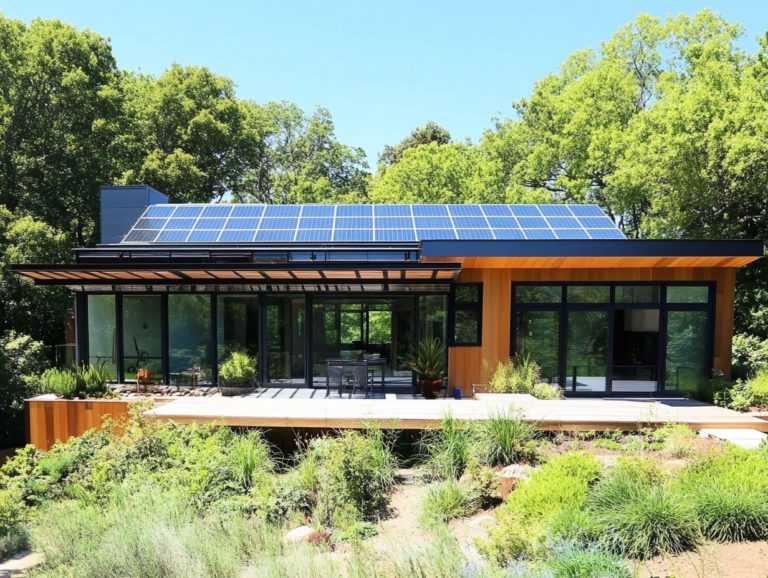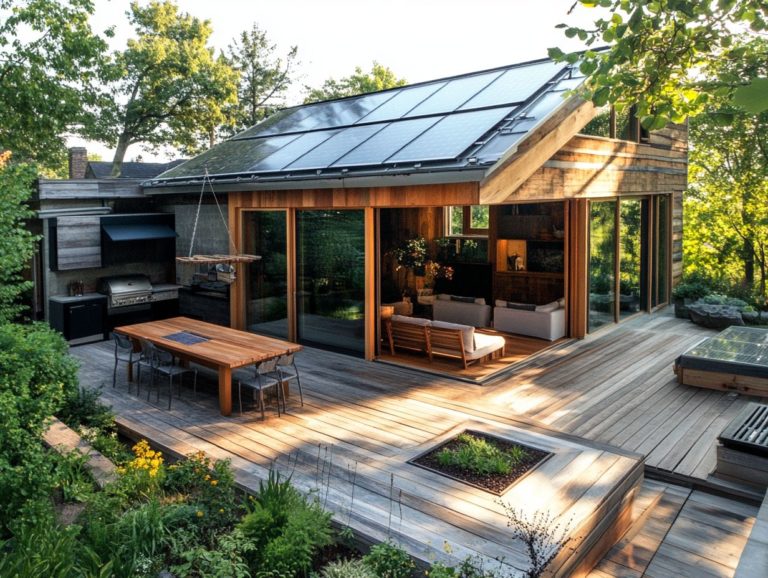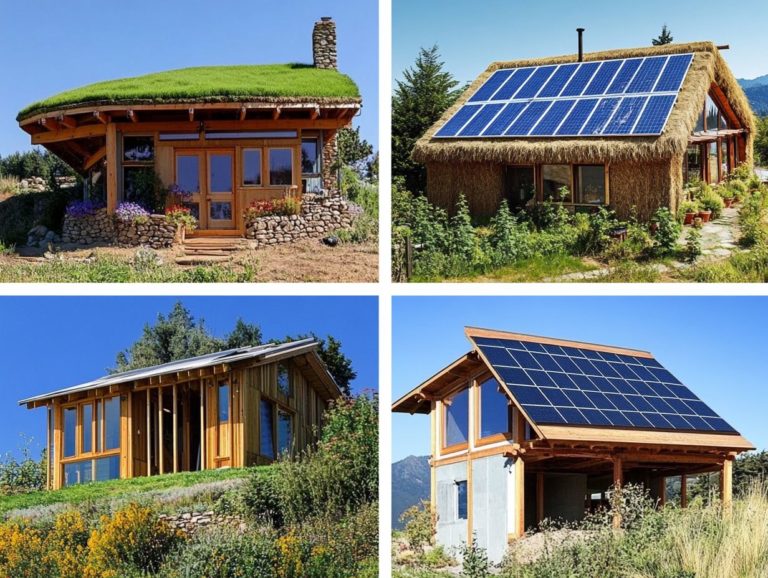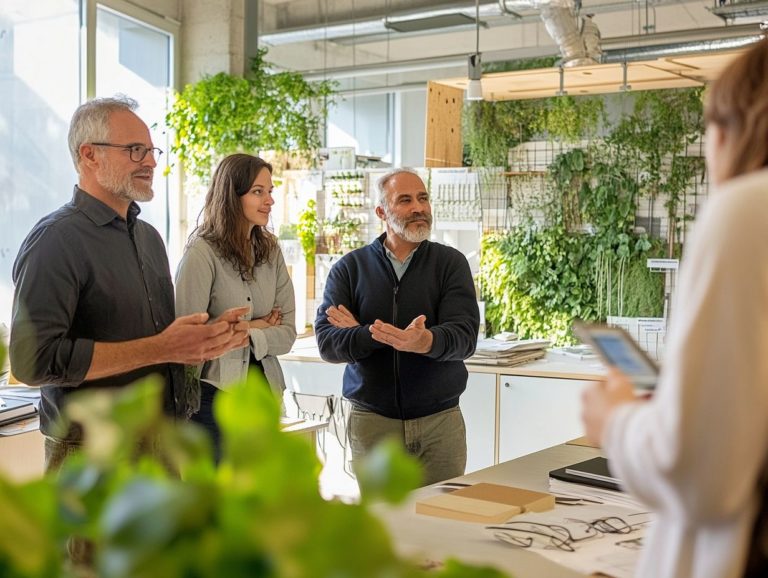The Importance of Sustainable Landscaping
Sustainable landscaping goes beyond being a trend; it is a crucial method for creating outdoor spaces that benefit the environment and the communities we live in.
This exploration covers the essential principles of sustainable landscaping, highlighting its environmental and economic benefits.
By outlining practical practices and addressing common challenges, you’ll see how sustainable landscaping can transform your outdoor area into a thriving ecosystem.
Contents
- Key Takeaways:
- What is Sustainable Landscaping?
- Benefits of Sustainable Landscaping
- Principles of Sustainable Landscaping
- Implementing Sustainable Landscaping Practices
- Challenges and Solutions
- Frequently Asked Questions
- What is the importance of sustainable landscaping?
- How does sustainable landscaping conserve resources?
- What are the benefits of reducing pollution through sustainable landscaping?
- How does sustainable landscaping support local ecosystems?
- What role does sustainable landscaping play in creating a healthier environment?
- How can I incorporate sustainable landscaping practices into my own outdoor space?
Key Takeaways:
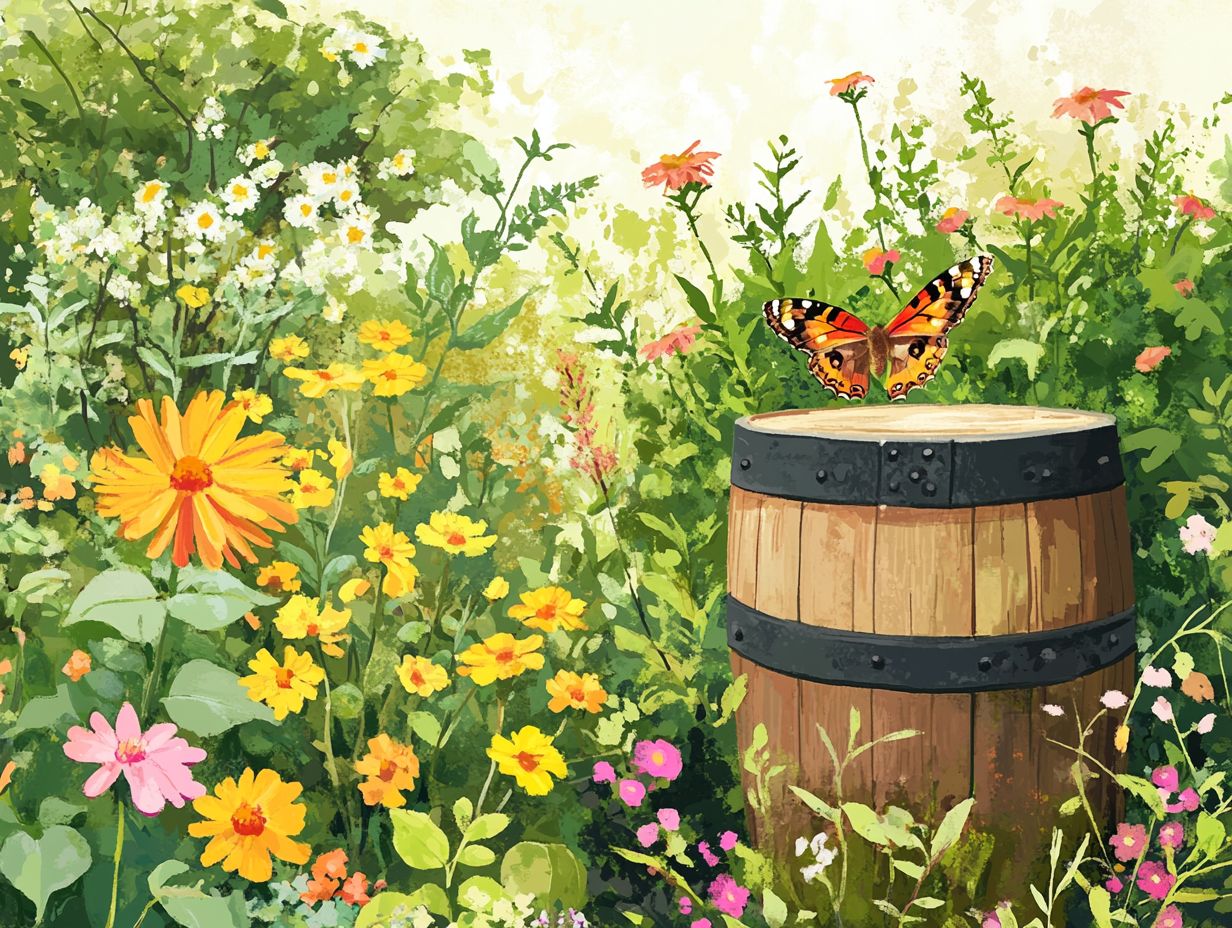
Sustainable landscaping creates beautiful, eco-friendly spaces. It reduces our environmental impact and saves money while fostering biodiversity.
What is Sustainable Landscaping?
Sustainable landscaping involves crafting outdoor spaces that enhance the beauty of your surroundings while conserving the environment.
This practice uses eco-friendly methods and organic materials, including efficient water management systems and native plants to build thriving ecosystems.
Landscape architects play a crucial role in this, designing spaces that adhere to green principles, promoting a harmonious relationship between nature and urban areas.
Benefits of Sustainable Landscaping
The advantages of sustainable landscaping extend beyond visual appeal; they include significant economic benefits and reduced environmental impact.
Practices like capturing carbon, reducing pollution, and creating wildlife habitats lead to a resilient environment that invigorates local economies and enhances outdoor experiences.
Principles of Sustainable Landscaping
The principles of sustainable landscaping focus on ecological sensitivity and emphasize elements that enhance biodiversity and environmental stewardship.
Key practices include using native plants, efficient water management, organic fertilizers, and ensuring habitat connectivity.
These strategies not only require minimal maintenance but also boost the aesthetic and ecological value of landscapes, allowing you to enjoy a thriving environment.
Implementing Sustainable Landscaping Practices
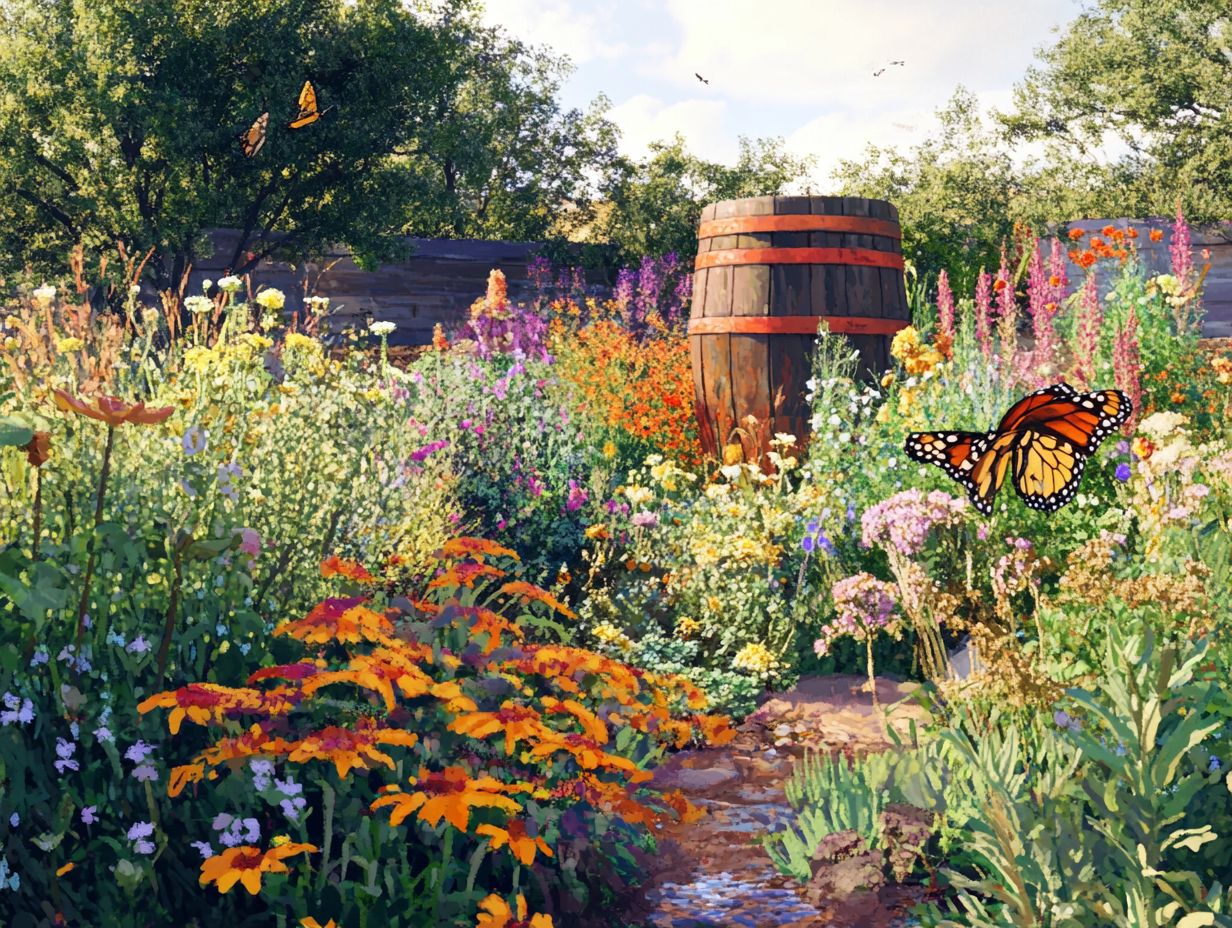
Implementing sustainable landscaping practices requires a thoughtful approach that emphasizes ecological balance and resource efficiency.
This journey starts with a thorough site analysis to understand your space’s unique characteristics.
Next, select construction methods and irrigation systems that align with sustainable principles. Integrate composting techniques and rainwater harvesting to boost soil health and biodiversity.
Managing invasive species is crucial, as is incorporating plants that attract pollinators, contributing to a sustainable landscape.
Challenges and Solutions
While the benefits of sustainable landscaping are clear, there are challenges that can impede its implementation.
To overcome these obstacles, consider the following innovative solutions:
- Foster community engagement.
- Amplify pollution reduction initiatives.
- Advocate for sustainable practices that enhance the environment and highlight the economic benefits of wildlife habitats and resilient spaces.
Wondering how to start? Here s what you need to consider.
Ready to make a change? Start your sustainable landscaping journey today!
Defining the Concept
Defining sustainable landscaping means embracing core principles that promote environmental conservation, ecological health, and biodiversity. This is achieved through the thoughtful use of native plants and sustainable practices.
By prioritizing local flora, you can create habitats that support native wildlife, enhance soil health, and minimize the need for chemical fertilizers or pesticides. This approach boosts air and water quality while fostering a lively ecosystem for pollinators and beneficial organisms.
Incorporating rain gardens and permeable pavements allows you to manage stormwater runoff effectively, contributing to ecological resilience.
Ultimately, adopting these sustainable landscaping techniques showcases your commitment to preserving our planet s resources while cultivating beautiful, functional outdoor spaces.
Environmental and Economic Advantages
The benefits of sustainable landscaping are significant for both the environment and the economy. Engaging in these practices contributes to wildlife habitats, enhances community well-being, and minimizes the environmental footprint of landscaping activities.
By adopting landscaping that reduces the need for water and using native plants, you lower reliance on chemical fertilizers. This not only increases energy efficiency but also plays a crucial role in reducing pollution, resulting in cleaner air and healthier ecosystems.
Sustainable landscaping fosters local biodiversity, which is essential for maintaining wildlife habitats. By creating green spaces, you enhance community interactions and boost mental well-being, transforming the area into a vibrant, eco-friendly place.
Key Elements to Consider
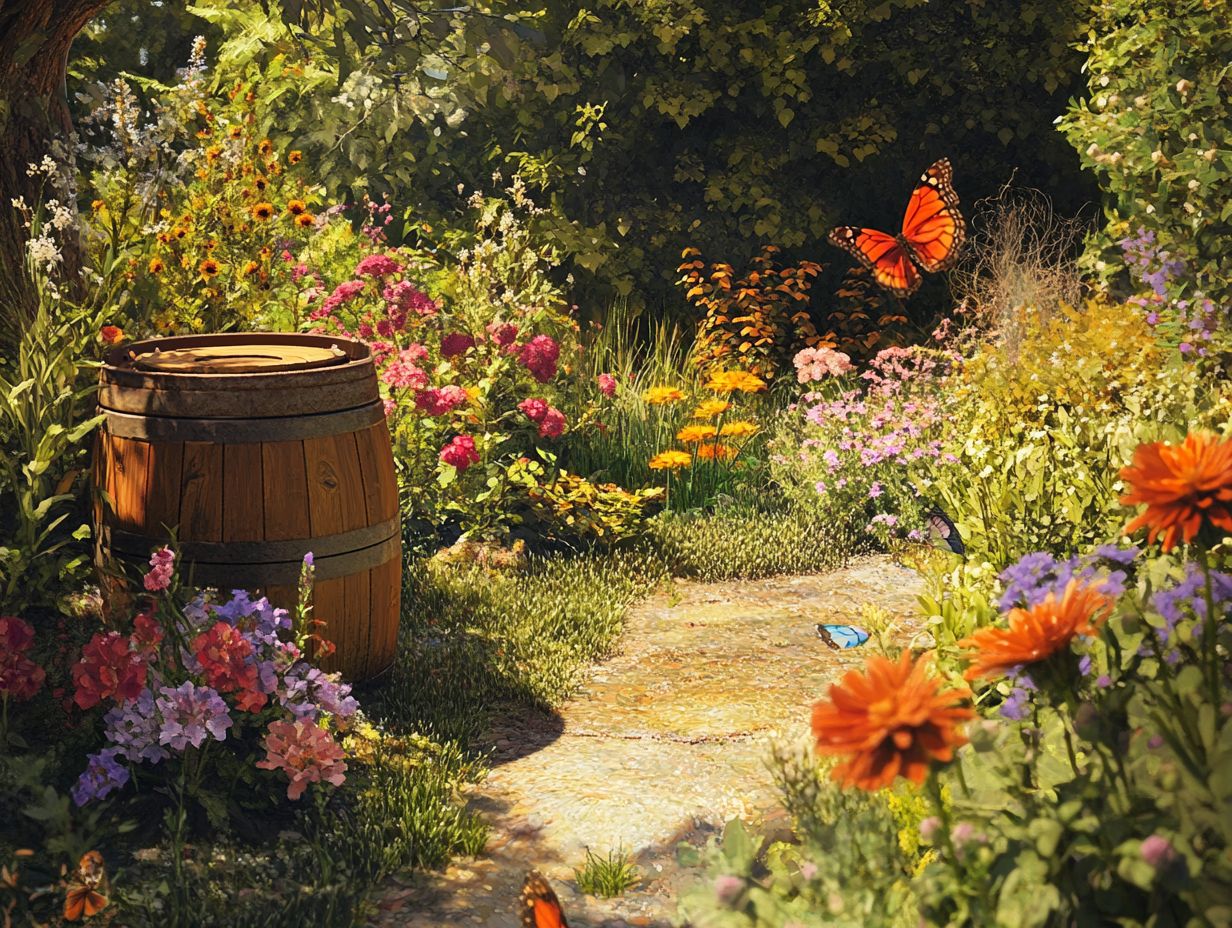
When considering sustainable landscaping, focus on key elements such as ecological sensitivity, the use of native plants, efficient water conservation methods, and low-maintenance plants to reduce resource consumption.
These components harmoniously create a resilient ecosystem that nurtures community well-being. By incorporating local flora, you attract beneficial insects and birds that play vital roles in pollination and pest control.
Implementing rain gardens and permeable surfaces allows for effective stormwater management, minimizing flooding and erosion. Utilizing drought-tolerant vegetation conserves water and reduces maintenance needs.
Together, these strategies promote ecological balance and enhance the aesthetic and functional value of community spaces.
Steps to Create a Sustainable Landscape
You can create a sustainable landscape today by following these simple steps, starting with a comprehensive site analysis.
Next, implement efficient irrigation systems, composting techniques, and rainwater harvesting strategies to improve ecological health.
These foundational elements are crucial for conserving water and improving soil quality, which supports plant growth and biodiversity. Conducting a detailed soil assessment allows you to identify specific nutrients needed for targeted composting that enriches the earth naturally.
Integrating drip irrigation significantly reduces water waste while ensuring your plants receive consistent moisture. Incorporating native plants into your design promotes resilience against pests and diseases, enhancing the sustainability of your landscape.
By prioritizing these technical strategies, you contribute meaningfully to environmental stewardship and create a thriving ecosystem.
Overcoming Obstacles to Sustainable Landscaping
Overcoming obstacles to sustainable landscaping requires a keen understanding of the challenges posed by climate change and getting the community involved to implement effective solutions.
One major hurdle is the widespread lack of awareness among residents about the benefits of environmentally friendly practices. To tackle this, consider developing targeted public awareness campaigns that can be highly effective.
These initiatives encourage individuals to embrace native plants and sustainable water management techniques. By engaging local organizations in workshops, we can create a collaborative atmosphere where community members can share ideas and learn from one another.
Let s create a space where everyone can share ideas and learn! This will help us all embrace sustainable landscaping practices, ultimately leading to healthier ecosystems and a stronger sense of community responsibility.
Frequently Asked Questions
What is the importance of sustainable landscaping?
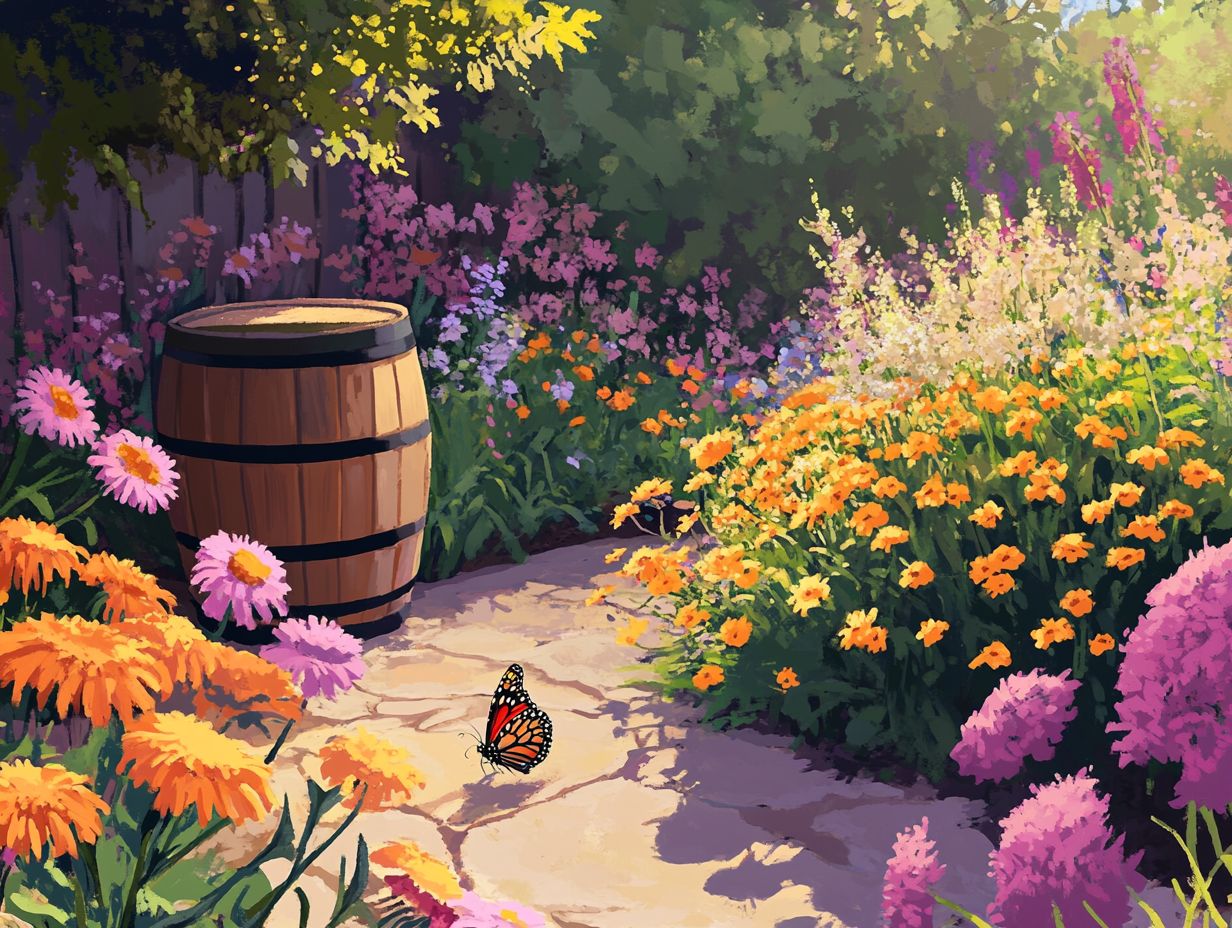
Sustainable landscaping is important because it helps conserve resources, reduces pollution, and supports local ecosystems. For example, water-efficient landscaping creates a healthier and more beautiful environment for people to live in.
How does sustainable landscaping conserve resources?
Sustainable landscaping practices, such as using native plants and reducing water usage, help conserve resources like water and energy. This reduces our overall impact on the environment and preserves these resources for future generations.
What are the benefits of reducing pollution through sustainable landscaping?
Reducing pollution through sustainable landscaping improves air and water quality. By using natural fertilizers and limiting chemical use, we can minimize harmful runoff and keep our surroundings cleaner and healthier for everyone.
How does sustainable landscaping support local ecosystems?
Sustainable landscaping supports local ecosystems by using native plants that are adapted to the local climate and require less maintenance. This helps preserve biodiversity and supports the natural balance of the surrounding environment.
What role does sustainable landscaping play in creating a healthier environment?
Sustainable landscaping creates a healthier environment by reducing the use of harmful chemicals and promoting the growth of beneficial plants. This leads to cleaner air and water, as well as a decrease in potential health hazards for people and wildlife.
How can I incorporate sustainable landscaping practices into my own outdoor space?
There are many ways to incorporate sustainable landscaping into your outdoor space, such as using native plants, composting, and reducing water usage. You can also consult with a professional landscaper who specializes in sustainable practices for more specific recommendations.
It s crucial to start implementing these practices today to ensure a better tomorrow for our planet!


